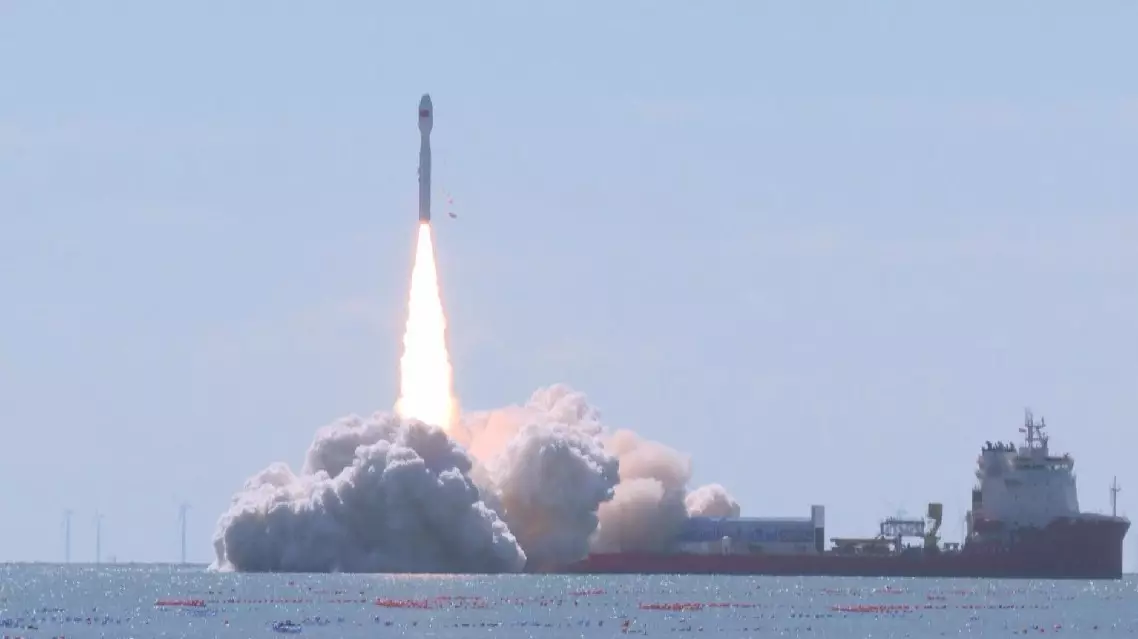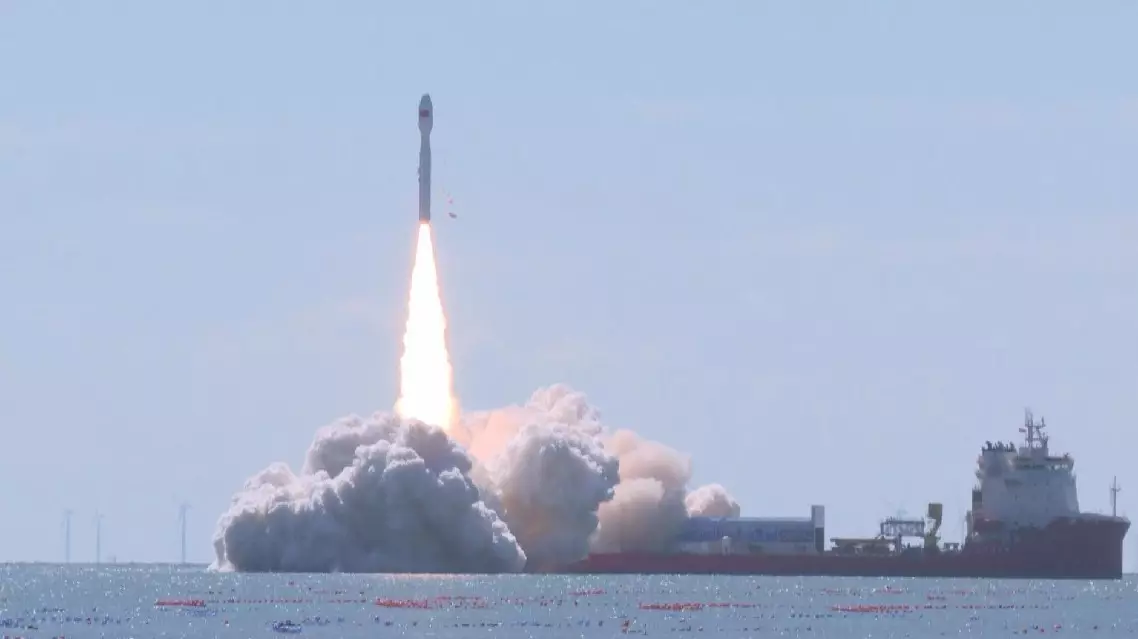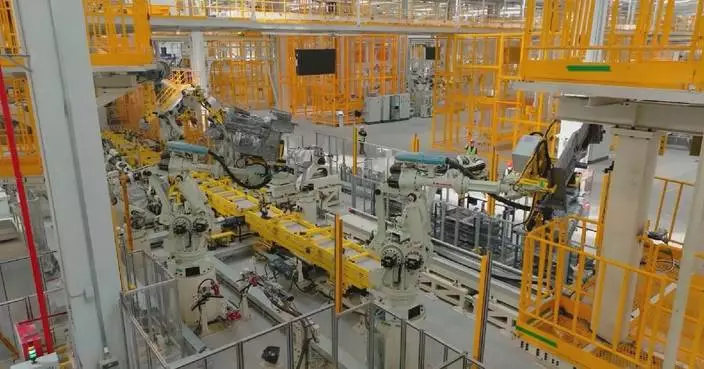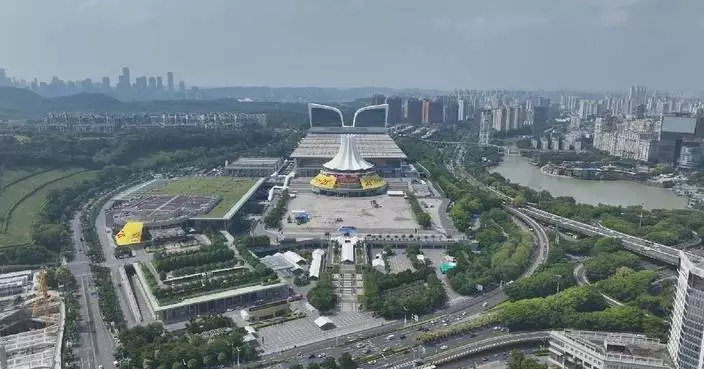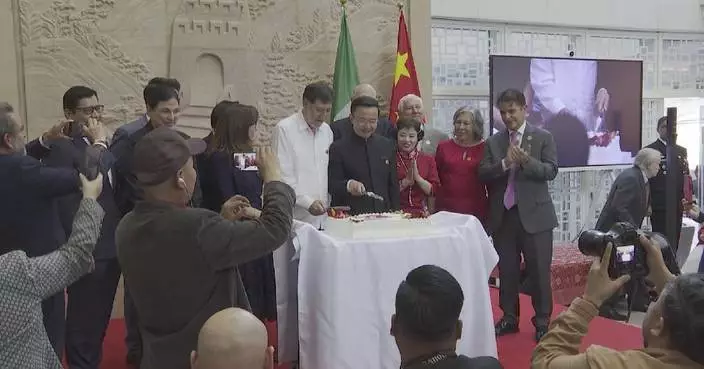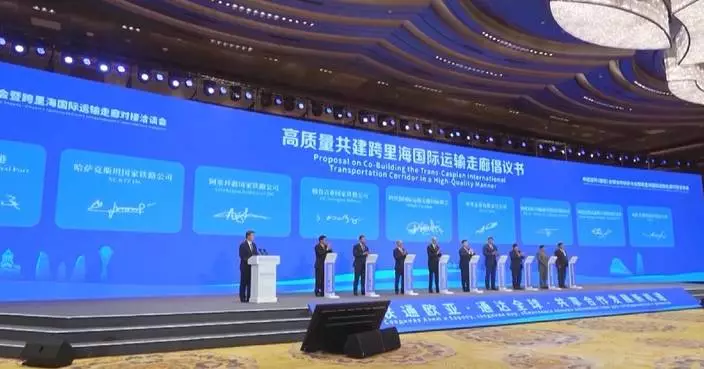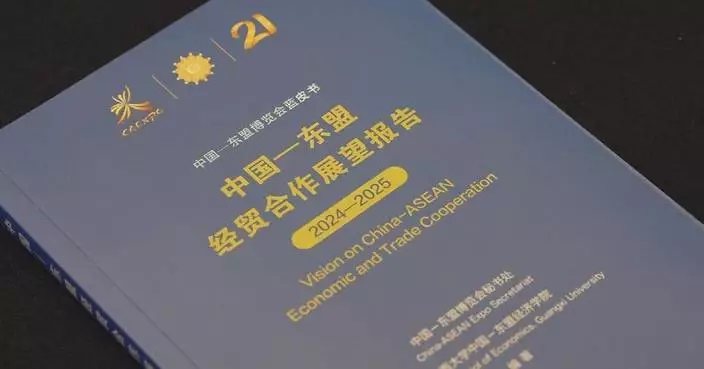Representatives of the Chinese aerospace sector say they feel greatly encouraged to continue working towards new milestones after meeting with Chinese President Xi Jinping on Monday, vowing to make greater contributions to strengthening China's space presence and furthering space exploration for all mankind.
Xi, also general secretary of the Communist Party of China Central Committee and chairman of the Central Military Commission, met with the representatives of space scientists and engineers who participated in the research and development of the groundbreaking Chang'e-6 lunar mission.
The Chang'e-6 probe made history by becoming the first spacecraft to successfully retrieve and return samples from the mysterious far side of the moon. Launched back in May, the craft successfully completed its 53-day mission and safely brought back nearly 2 kilograms of lunar samples.
During the meeting at the Great Hall of the People in Beijing, Xi encouraged those engage in China's space sector to continue to work hard and accelerate progress in future space endeavors.
"The general secretary encouraged us to make persistent efforts and seize the opportunity to make new contributions to strengthening China's space presence. It is a great honor for me to be able to participate in the Chang'e-6 mission which brought back the world's first samples from the back of the moon," said Wang Qiong, deputy chief designer of the Chang'e-6 mission, in an interview with China Media Group (CMG) after the meeting.
"Chang'e-6 retrieved lunar samples from the far side of the moon, which marks the first time in human history this has been achieved. It is also a very difficult task. This is a complex large-scale system project. Individual strength may be small, but we have a large team working together, which has combined to create today's immense power," said Hu Haode, engineer at the Lunar Exploration and Space Engineering Center of the China National Space Administration (CNSA). "Throughout the whole process, we watched the older generation of aerospace experts, with their rich experience and wisdom, overcome difficulties and solve problems one after another. And in the learning process, we gradually deepened our understanding of the lunar exploration project, and why it has been able to take such a successful and efficient path over the past 20 years. I think this is a very important task for us after taking over the baton," said Zhu Hanyou, director of the Lunar Exploration and Space Engineering Center of the CNSA. "In addition to bringing back the lunar soil, we are conducting scientific research to answer a very important question, which is the origin and evolution of the solar system and our entire human race. The (lunar exploration) project is the starting point of this matter. We bring back the lunar soil through the project, and then, we will conduct lunar soil research by pooling the efforts of many scientific and technological workers. In this way, we can really contribute to building greater scientific and technological strength in our country," said Liu Keyan, assistant engineer of the Lunar Exploration and Space Engineering Center of the CNSA.
"Just now, the General Secretary also mentioned that space, especially the moon, is a common homeland for mankind. It needs the efforts of all of mankind to explore it. For our entire lunar exploration project, when it started 20 years ago, we had a clear strategic development plan, with a three-step development strategy of orbiting, landing and returning. The entire lunar exploration project is following the blueprint we drew up before, and step by step it has been turned into a reality," said Li Pingqi from the China Aerospace Science and Technology Corporation.
"One of the key principles of our lunar exploration is win-win cooperation. We have always been adhering to this attitude of openness and cooperation, and welcome scientific research institutions around the world to participate. The Chang'e-6 mission involved international cooperation with four countries. In the future, there will be larger-scale international cooperation in the Chang'e-7 and Chang'e-8 missions. Therefore, the lunar exploration project is actually not only for China but also for the sake of all mankind. We feel the earnest trust and instructions of the General Secretary and we must implement his requirements in our future work, transform them into concrete actions, and draw this blueprint well and thoroughly," Wang said.
During the meeting, Xi set out the key aims for the aerospace sector going forward.
"We must vigorously promote the spirit of lunar exploration, characterized by 'chasing dreams, daring to explore, collaborating to overcome challenges, and achieving win-win cooperation,' to further enhance the national confidence and pride of all Chinese people, and build up a great force for comprehensively promoting the building of a strong country and realizing national rejuvenation through Chinese modernization," he said while addressing the attendees.
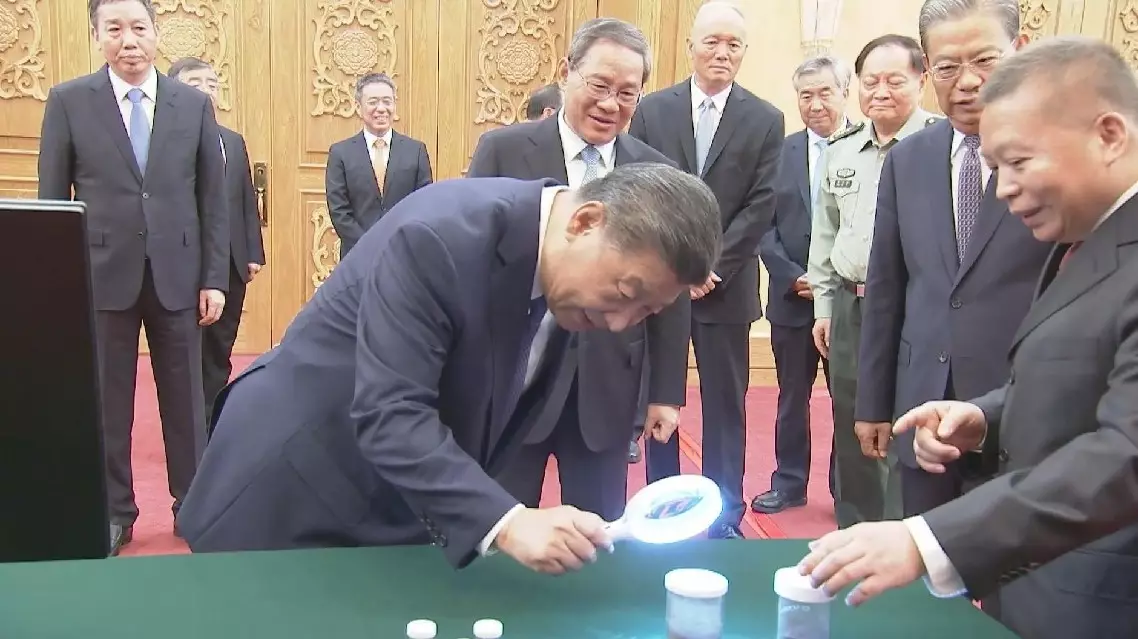
Chinese aerospace workers inspired to continue aspiring higher


